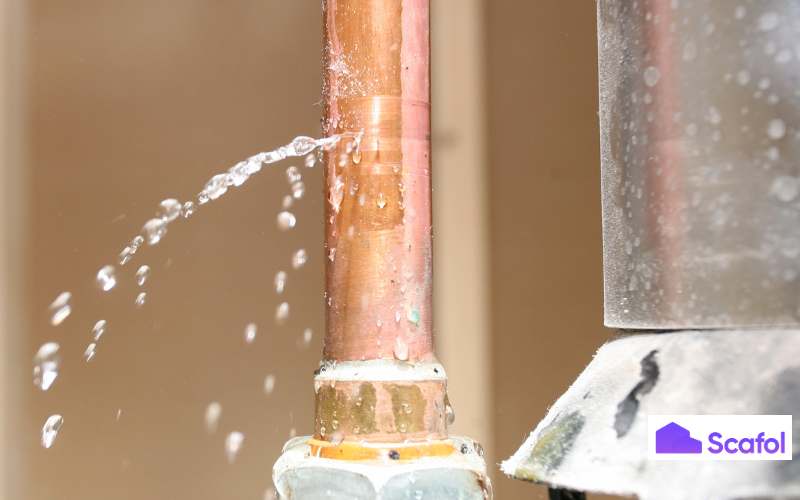
As a surveyor, your days can be filled with complex calculations, meticulous inspections, and the occasional emergency trip up a ladder. One of the more common tasks on your to-do list, though, is housing disrepair surveys. It’s not exactly glamorous work, but it plays a vital role in ensuring tenants live in safe and comfortable homes. Plus, with your keen eye for detail, you’re the unsung hero of housing justice! But let’s not get too carried away. Let’s dive into what housing disrepair surveys are all about, and why you should embrace them (or at least tolerate them with a smile).
What’s a Housing Disrepair Survey Anyway?
In short, a housing disrepair survey is an inspection of a property to assess whether there are issues that make the home unfit for habitation. These could be anything from leaking roofs to faulty plumbing, mould, damp or dangerous electrical wiring. The surveyor’s job? To find and document these issues so that the tenants can have them fixed by their landlord. Now, it’s important to remember that disrepair surveys aren’t just about finding problems to complain about. It’s about identifying the real issues that need to be addressed for the health, safety, and overall well-being of the tenants. It’s the difference between someone grumbling about a creaky floorboard and an actual hazard like a broken boiler or mould that can lead to respiratory issues.
Why Should You Care? (Aside from Being a Good Human)
So, what’s in it for you? First of all, you’re helping people. A disrepair survey might just be the key to getting someone’s damp bedroom fixed, their unsafe stairs repaired, or even their electrics checked before something worse happens. Additionally, if you’re working in a consultancy or surveying firm, these kinds of surveys can be a bread-and-butter job. Sure, it’s not as exciting as a commercial property valuation or a grand new build, but it’s the kind of work that’s steady and reliable. Plus, it pays well, and you know as well as anyone that in the world of surveying, consistent work is golden.
The Process: A Day in the Life of a Disrepair Surveyor
The Pre-Survey Briefing
A good surveyor knows that preparation is half the battle. Before you show up at a property, you’ll want to know the basics and review the Letter of Claim that will list the specific issues that have been reported. Also, are there any previous repair work requests on file? Get all your ducks in a row before you go in.
Meeting the Tenant
You’ll often meet the tenant when you arrive at the property. It’s your chance to hear directly from them about their issues—whether that’s mould in the bathroom or a door that won’t close. Now, you don’t need to play therapist, but be empathetic. They’re usually dealing with a frustrating living situation, and sometimes, just listening can go a long way.
The Inspection
Here comes the fun part (well, as fun as crawling around damp basements and climbing into attics can be). You’ll be checking every nook and cranny of the property for damage. Be thorough! Make sure to note things like leaks, cracks, faulty fixtures, and anything else that could be considered an actionable item of disrepair, risk or simply unpleasant. Don’t forget to take pictures—lots of pictures—because “I swear I saw a crack in the wall” doesn’t work without solid evidence.
The Report
After the inspection, it’s time to sit down and write up your findings. A good report is clear, concise, and detailed. List each issue you’ve discovered, explain why it’s a problem, suggest the kinds of repairs that are required and associated costs using the required format. Use your professional judgment and, of course, try to keep it professional (no snarky comments about how obviously this house has seen better days).
The Outcome
After you submit your report to the tenant’s solicitor, they will likely discuss it with the landlord’s solicitor to determine the appropriate actions and compensation based on the report’s findings. If the two sides cannot reach an agreement due to differing opinions from the surveyors, the matter may be taken to court.
Common Issues You’ll Find (And Some You’ll Wish You Didn’t)
- Damp and Mould: Probably the number one issue you’ll come across. It can be caused by leaks, poor ventilation, or faulty insulation.
- Leaks: Water damage can be tricky, particularly in blocks of flats. Leaking roofs, pipes, or even windows are common offenders.
- Structural Issues: Cracks in walls or ceilings could indicate deeper problems with the building’s structure.
- Unsafe Electricals: Don’t mess around with dodgy wiring. This could be a serious fire hazard.
- Faulty Plumbing: Check water pressure and look for signs of leaks or inefficient plumbing systems.
Tips for a Successful Housing Disrepair Survey
- Be Thorough: A rushed survey might miss vital issues.
- Communicate Clearly: Explain issues in simple terms to tenants.
- Document Everything: Take plenty of photos and notes.
- Be Objective: Report the facts without personal opinions.
Wrapping It Up
Housing disrepair surveys are a crucial part of the property world. They might not be as exciting as inspecting a new build or valuing a mansion, but they’re just as important. By conducting thorough, fair, and clear surveys, you’re making sure tenants are living in safe homes and helping landlords stay compliant with the law. So, next time you’re scheduled for a disrepair survey, grab your toolkit, put on your best “I’m here to help” smile, and get to work. After all, you’re the one with the power to make a real difference in someone’s home—and that’s something to be proud of.

















 Book a Demo
Book a Demo